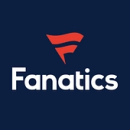
The industry is abuzz with open positions for developers who can understand and work on both ends of the stack.
A full-stack developer’s ability to switch between the front and back end makes them quite versatile employees, and consequently, individuals with the required skill set will find themselves at the top of a company’s wish list.
If you’re wondering what a full-stack engineer’s day-to-day at a top Colorado tech company looks like, look no further. Built In Colorado caught up with engineering leaders from eight companies across the state to find out what kinds of projects are currently putting both their front-end and back-end skills to work.
ShapeShift is a crypto-services company that helps users easily manage their digital finances. Due to the nature of the industry, most developers are anonymous (like the one featured below). However, full-stack developers do play a large role in many of the company’s development processes, working across several repositories at any given time.
What role does a full-stack developer typically play at your company?
Full-stack developers get to play a role in large slices of our processes, as well as across the entire codebase. We start each set of feature work (we call them epics) by meeting with the product team to understand the desired end-user functionality, including the UI/UX designs (user stories). Then, a squad of developers convenes to discuss the stories and break the work down into developer tasks. We discuss various design decisions so we are all on the same page at a high-level and leave the more granular implementation to the individual developer who picks up each task.
The work includes back-end services to serve data and functionality to the front end, as well as the front-end coding on both web and mobile. More often than not, we work across a number of our repositories in a given epic. It keeps things interesting and there’s always more to learn.
Full-stack developers get to play a role in large slices of our processes, as well as across the entire codebase.”
What’s an interesting project you’re currently working on?
I am working on a project to refactor the way we access blockchain data. This is a fun challenge because there isn’t an “easy way” to create a standard process for our services to query for blockchain data. At ShapeShift, we have a platform that allows users to trade between coins and tokens, where each coin or token functions a little bit differently. Tokens live on blockchains that already exist, while coins have a specific and unique blockchain that they run on.
There is nothing more satisfying than seeing a new coin or token go live on our platform. One aspect I am most proud of is the time our team dedicates to learning lessons from older implementations and then improving upon them. Our industry is innovating quickly, so we need to come up with solutions that work for us now and give us the flexibility to adapt to future needs. We are always working on how to do something better to keep ahead of the competition.
Guild is an education technology company that partners with employers to build strategy education benefits programs for employees. Senior Software Engineering Manager Jay Ockers said that even though his team supports multiple different technology stacks, everyone is encouraged to work together to make cohesive and comprehensive solutions.
What role does a full-stack developer typically play at your company?
Guild engineering deploys full-stack engineers to most of our teams to ensure they take a holistic approach to solving problems. My team supports multiple React single-page applications, a back-end Rails API, a few lambdas and various other cloud technologies. I lean on my full-stack engineers to help everyone stitch together the pieces into cohesive and comprehensive solutions. The benefit of this approach is that it allows some engineers to specialize in technologies like React or Rails and still create complete, well-designed solutions.
My team solves problems with our business and mission of unlocking opportunity through education and upskilling with America’s workforce in mind.”
What’s an interesting project you’re currently working on?
My team is working to replace our original Rails-based roles and permissions system with a modern solution that is easier for our IT organization to manage, is more secure, and most importantly, scales for our growing student population. I challenge my engineers to solve problems with our entire business and mission of unlocking opportunity through education and upskilling with America’s workforce in mind. While keeping both of those front of mind can present some challenges, it also ensures that our solutions are significantly more complete.
The greatest reward for myself and my team comes from gaining a deeper understanding of the problems that our business solves so that we can build better models that more accurately account for those challenges and, in turn, better serve the students our company supports.
Trineo is a professional services and software company that focuses on free legacy data, delivering future-proof API platforms, and developing customer and employee experiences. Lead Engineer Michael Ovies said that engineers who embrace the full stack play an important role in feature development at Trineo.
What role does a full-stack developer typically play at your company?
Understanding a feature set across the stack is a potent skill for an engineer to bring to the team. Not every engineer cares to excel across domains or should be expected to, however, those who do are incredibly useful to their team. Here at Trineo, we certainly have a mix of preferences, but those that embrace the full-stack often play an important function in feature development. These engineers often work to bridge both domains in such a way that we wind up with a much greater understanding of how all the pieces fit together. This is where their knowledge really pays off, in my opinion.
Full-stack engineers often work to bridge both domains in such a way that we wind up with a much greater understanding of how all the pieces fit together.”
What’s an interesting project you’re currently working on?
My team and I are currently working for one of our long-time clients on a compelling new piece of work that focuses on reporting. This client is in the physical advertising business, both print and digital signs, so being able to report on key measures of how their ads are performing across both practices is directly tied to their bottom line.
It’s true that PDFs and reports aren’t the sexiest things in the world, but their current solutions are over a decade old and are representative of how things worked when initially built. With this new initiative, we now have the opportunity to bring these reports into alignment with a fresher take on our customer’s brand. Doing this will consolidate multiple reports into one and streamline the entire process, from request to delivery, into something much more user-centric. As a result of these improvements, we will be driving increased value for our customer’s users along with more clearly demonstrating the value of the ads themselves — directly impacting our customer’s bottom line.
In general, I derive most of the reward in software engineering from the impact it has on the end-user.
Havenly is an online interior design and home decorating platform that allows users to have as much or as little input as they want. This year, developers at Havenly created a new feature of the app that allows users to search and safe design inspiration for their own spaces, Senior Software Engineer Steve Moody said.
What role does a full-stack developer typically play at your company?
Full-stack developers do it all at Havenly — we develop, test and deploy code from inception to production. We build and maintain cloud infrastructure, evaluate and resolve bugs as they are discovered, and plan and scope user stories alongside business stakeholders.
To put this into perspective, I recently worked on a project to add Apple Pay to our iOS app, which involved an upgrade to our payments integration. This started with a user story from our product team, from which I scoped and tasked out the work. In the end, I built a new server-side integration with our payments provider, a serverless event handler service, updated existing database entities and helped develop new browser and iOS app elements.
It’s been rewarding to build a product that helps people create a delightful home environment.”
What’s an interesting project you’re currently working on?
At Havenly, our interior designers create a ton of beautifully-designed room renderings that they deliver to our customers. This year, we worked hard to build a new feature of our app that shares the best of those beautiful designs in a feed for all our users to see. Through this feature called “Explore,” users can search and save design inspiration for their own living spaces. It’s been rewarding to build a product that helps people create a delightful home environment, especially now that many of us are spending much more time there.
Name.com is a domain registrar that helps users get their ideas on the web. Full-Stack Engineer Katie Wokasch said that engineers at Name.com continuously rotate the type of work they do — whether it’s feature development or bug fixes.
What role does a full-stack developer typically play at your company?
One of the most interesting aspects of working on the engineering team at Name.com is that each team member has the ability to work in all parts of our code. The complex nature of our application requires a deep understanding of our stack, and each project presents new challenges and opportunities to work on different parts of our code. Each member of our team rotates through sprints where they work on either feature development or bug fixes — both of which often require full-stack investigation and development.
By working full stack, we can better understand how customers interact with the app on the front end, enabling us to better design the organization and delivery of data on the back end. This allows for more seamless communication between our back-end and front-end code and improves the overall architecture and performance of our app.
One of the most interesting aspects of working on the engineering team at Name.com is that each team member has the ability to work in all parts of our code.”
What’s an interesting project you’re currently working on?
Our engineering team is working on a project to improve usability for our global customers. This has been an interesting and complex project as these changes touch many different parts of our code. Currently, I am working to ensure that customers see their desired currency throughout the checkout process and in any communications from Name.com.
This project has been both challenging and rewarding, requiring a solid understanding of the full code stack to verify that we are collecting and displaying the correct data to our customers. It will be even more rewarding when we deliver this project and can see the positive impact it has on our customers, providing for an even better customer experience at Name.com.
Fanatics is an e-commerce company that designs, manufactures and distributes high-quality sports gear across retail channels. Senior Software Engineer Stacie Graves said that at Fanatics, engineers are encouraged to have a specific area of expertise so that they can share knowledge and resources across different parts of the project.
What role does a full-stack developer typically play at your company?
At Fanatics, full-stack engineers can work across the stack but often have a specific area of expertise. We leverage this skill set by sharing resources across different parts of our project as needed. For instance, sometimes there are challenging problems that require more effort in specific parts of our stack and we can devote additional resources when necessary to meet our goals.
At Fanatics, full-stack engineers can work across the stack but often have a specific area of expertise.”
What’s an interesting project you’re currently working on?
I am currently working on an ETL project that we’ve written in-house. I find this project both challenging and rewarding because we’re using a modern technology stack and generating our own code to support our underlying models. Code generation can be especially powerful to save time on repetitive tasks that can’t be normalized in code.
For example, our data models are rapidly changing and we’re using templates in Golang to generate the code necessary to support the usage of these models so that we don’t need to make these changes by hand in a multitude of different places. Not only does this save us time but it’s also more accurate. Code generation isn't something that I’ve had the opportunity to use often, so it keeps things really interesting.
AdAction helps companies get more clicks and conversions through its app advertisements and monetization solutions. Full-Stack Developer Clay Smith said that because AdAction encompasses more than just one website, developers must be able to create a product that they can apply across the board.
What role does a full-stack developer typically play at your company?
A full-stack developer is kind of seen as a Swiss Army Knife. Whether a problem needs a DevOps solution in AWS or a custom UI tool built out from a drawing on a napkin, a developer can do it.
The application I am currently working on is the classic example of a full-stack developer. This application is user-facing and includes integrating with an API to communicate with the server and deciding what database and schema is best suited for data needs while making deployments easy through a CI/CD pipeline. The unique aspect at AdAction is that “full-stack” encompasses more than a single website, so developers here have to think, “How can I make this reusable for website X with the potential for website Y and Z to use as well?”
However, code can solve problems outside of the standard front-end and back-end idea most people think of. I recently threw a quick Google App Script together to make someone’s job a little easier by automating calendar updates through a spreadsheet.
Whether a problem needs a dev-ops solution in AWS or a custom UI tool built out from a drawing on a napkin, a developer can do it.”
What’s an interesting project you’re currently working on?
My current project is building out an interactive consumer site, as well as a platform, to spin up many similar sites in the future. This is a unique structure since it’s essentially a content delivery network and must be scalable to manage dozens of sites in the future without exponentially increasing resources and complexity. It’s challenging to learn the specific business and optimize a single application while keeping the big picture in mind as well.
It’s fun working for a small company — you have to really know how the whole tech structure works or find out quickly. If a piece is missing, you learn it and build it. As a developer, I get to constantly push my skills and learn at a rate that just is not possible at a larger company.
Information technology company MetaRouter provides streaming data routing solutions for companies with security and latency concerns. Doug Whitney, a senior UI engineer, said that the typical MetaRouter developer role includes hands-on development work, systems design and architecture, and managing and prioritizing workflows.
What role does a full-stack developer typically play at your company?
Although most of us on the engineering team at MetaRouter end up working across multiple layers of our tech stack, we don’t have designated full-stack developers. As a small team, we each have our own areas of focus and are expected to look at things from a product perspective, which gives developers a broad view of how all of our systems work together and encourage people to dive in wherever help is needed.
The typical developer role here includes hands-on development work, systems design and architecture, shared responsibility for managing and prioritizing workflow, as well as a large emphasis on understanding business needs and collaborating to find effective solutions.
We encourage developers to dive in wherever help is needed.”
What’s an interesting project you’re currently working on?
We’re currently building a web app that makes it easy for users to edit and manage very complex configuration files. As a greenfield project, one of the early challenges was setting up an effective monorepo architecture and the tooling necessary to separate the various app concerns into individual projects such as API layer, component library and the UI itself, while still supporting a low-friction developer experience where we can iterate quickly across projects.
One of the best parts is watching the vision for a product becoming more concrete over time and having a part in making it real.



















